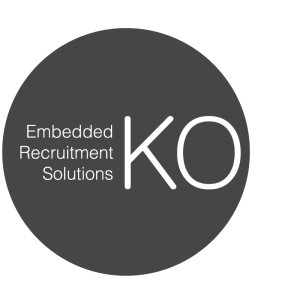Expectations around working location have changed significantly over the past couple of years. Working from home used to be mainly reserved for freelancers or was just offered as an occasional perk for employees who needed flexibility. But now, it’s a way of working that is common across a wide range of industries, which many candidates consider to be a non-negotiable aspect of a role.
Engineering is an industry that has been impacted by this change in interesting ways, as certain roles in certain sectors require staff to be onsite every day to complete their work. However, mandatory working from home during the pandemic proved that many engineers could do at least some part of their jobs remotely, which led to hybrid models of working once restrictions were lifted and workplaces were safe to use again.
Recent data from TravelPerk showed that only 30% of UK companies are working fully on-site in 2023, with around 40% of employees surveyed sharing that their companies have shifted to a hybrid model. We’re seeing plenty of cases of companies shifting back from remote to hybrid at the moment, so it looks as though hybrid workplace models are the most popular choice for companies looking to offer their employees flexibility.
Discussions around hybrid and remote work are more nuanced in the engineering industry, particularly for electronics companies, as often employees need to be onsite in labs and workshops to do their jobs. But when 83% of employees have stated that they would prefer a hybrid model, employers should consider what they can realistically offer their workforce and what benefits they’ll get from this.
When you’re thinking about hybrid working models, it’s important to first understand what the state of hybrid work is at the moment, and how to get the best from it. In this article, we help employers in the engineering industry answer these questions and share our insight into what hybrid working means now and in the future.

What Does Hybrid Working Mean?
The official definition of hybrid working, according to the CIPD, is “a form of flexible working where workers spend some of their time working remotely (usually, but not necessarily, from home) and some in the employer’s workspace.”
But when you search for definitions of the hybrid work model, you’ll find all kinds of varying descriptions, which indicates one of the issues we’re seeing at the moment when companies offer ‘hybrid work’ options: what does hybrid working actually mean?
For an engineering company, hybrid working could mean that employees all work from home one day a week and spend the rest of their time together onsite. It could mean that different teams and departments come in on different days during the week, so the whole company is never all in an office at once. Or it could mean that a company has remote employees around the country who all come to an office space once a month for a team meeting in person.
The fact is that hybrid working can be a wide range of different things depending on the employer, which can be confusing for candidates when they’re applying for roles and just see ‘hybrid’ offered as a way of working with no other information. Generally, employees are required to come into a permanent workplace for some of the working week when they have a hybrid work arrangement, but the frequency of this can impact whether employees need to live locally, which is a key consideration for candidates and clients.
Whilst some software development roles allow employees to work fully remotely without having an impact on their jobs, most jobs in the electronic embedded systems sector in particular require employees to be onsite at least some of the time. So when it comes to defining what hybrid working means, it usually comes down to the kind of work the company does and how much hands-on work employees do in their roles.

How Many Days Is Hybrid Working?
The lack of an overarching definition of hybrid working means that a common question candidates have is how many days in the workplace are actually required in a hybrid work environment.
The most common split that we see in our industry sector is three days onsite and then two days remote, which allows for teams to complete practical or collaborative work with the required equipment and then work on more focused or administrative tasks independently. This may vary between companies however, with some clients offering employees more time to work remotely and others requiring teams to be onsite for almost the entire week.
As an employer, it’s important to consider the number of days you will require staff to be onsite if you offer a hybrid working arrangement. This impacts whether your employees will need to live a commutable distance from their workplace, which also impacts whether you can advertise roles to candidates outside of the local area. Rising living costs and house prices mean that relocating for work is becoming increasingly uncommon, so if you want your team onsite for the majority of the week, you need to be prepared to decrease your hiring pool.
What Are the Benefits of Hybrid Working?
When we’re looking toward the future of hybrid working, as well as what it looks like right now, it’s useful to investigate the benefits of hybrid working. In order to understand why candidates value hybrid options and why your company should continue to offer them, let’s take a look at the advantages.
Firstly, choosing hybrid workplace models gives employees the benefits of being able to work remotely whilst also maintaining time onsite that is required for practical tasks or important collaborative work. Even having a couple of days a week working from home provides the benefits of remote working like deeper focus and better work-life balance, without losing all the value that in-person working brings as well.
Another benefit of hybrid work is that it’s a flexible model, which means you can tailor it to your engineering company’s specific needs. We’ve already discussed how different models vary between organisations, so depending on why you need employees onsite, your hybrid setup can be adapted. This can even vary between teams, providing employees with even more flexibility.
Adopting a hybrid model can help employees use their time onsite more productively and be more engaged whilst in the workplace. When face-to-face collaboration is more limited, employees tend to value these opportunities more and bring more energy to them, leading to more productivity. Having fewer days onsite also means that there’s less time to get necessary tasks done, which can encourage employees to be more focused and use their time more effectively.
Equally, a hybrid model can also ensure that employees are using their time working from home more effectively. Having designated days alone in a home office or coworking space presents clear opportunities for deep work and focused time, which again can help employees to work more productively.
Finally, from a recruitment perspective, one of the key advantages of hybrid working is that it’s a valuable benefit for potential employees. A recent study by Buffer revealed that 98% of employees would like to work remotely at least some of the time, so if you don’t offer this flexible option, you’re potentially going to lose out on a huge number of candidates. The current market is very candidate-led, so this isn’t something that most companies can afford to let happen.

How to Make Hybrid Working a Success
Hybrid working models will likely continue to change over the coming year. Whilst we may be seeing more companies starting to insist on having employees back in the office in the engineering and tech industries, having flexible work options is still a priority for employees, so employers will have to figure out the best way to make hybrid working a success.
Here’s our advice to get the most out of your hybrid workplace models in 2024.
Firstly, consider the responsibilities and tasks that each employee is required to do in their role, and how much of this has to be performed onsite. Be reasonable about how many days they will need to be in the workplace and how many they could spend at home to make sure that they’re not being asked to come onsite more than is necessary. This is key when you’re advertising a role, as you need to be clear about expectations from the start.
This is important because when many employees are given more freedom and flexibility, they’ll be much more positive about coming to the workplace when required, as opposed to feeling forced and then resenting the time they spend onsite.
Where possible, another way to improve hybrid working is to make your workplace a positive place to spend time with benefits that demonstrate the value of being onsite. You don’t have to go overboard with what you offer, but alongside the necessary tasks that need to be done at work, consider what else employees gain from in-person work and how you can add to this value. Speaking to your current employees about how you can improve this is a great approach.
We’ve touched on location already, but a key consideration for successful hybrid working is how far your employees have to travel to come onsite, how long this takes and whether this commute impacts their experience. If you’ve got a team that has to travel a reasonable distance to work, asking them to come in four days a week isn’t going to be as easily accepted as only one or two. Hybrid schedules also don’t have to be the same for all employees; you can be flexible with what you offer depending on where your teams are based.

Summary
Discussions around hybrid working indicate that it’s the preferred model over remote work, but also that it’s unlikely that most engineering companies will return to having employees fully onsite at all times. As an employer, the most important thing is to strike the right balance between ensuring deliverables are completed and goals are met and keeping employees happy, along with offering competitive work options to candidates so that you attract the best talent.
If you’re looking for help with hiring hybrid employees in the electronic embedded systems sector, KO2 is a specialist recruitment agency in this engineering sector that can help. Find out more about our client services or get in touch to speak to the team about how we can help.







